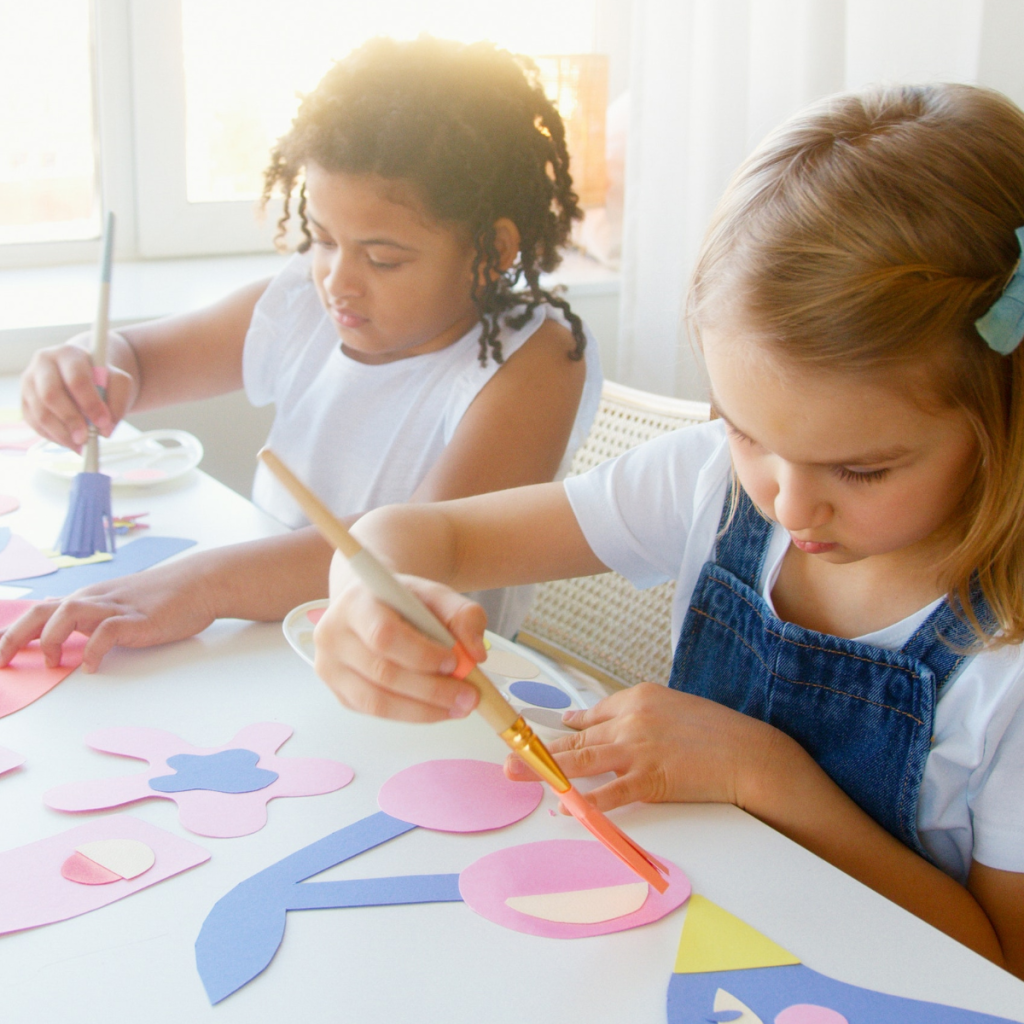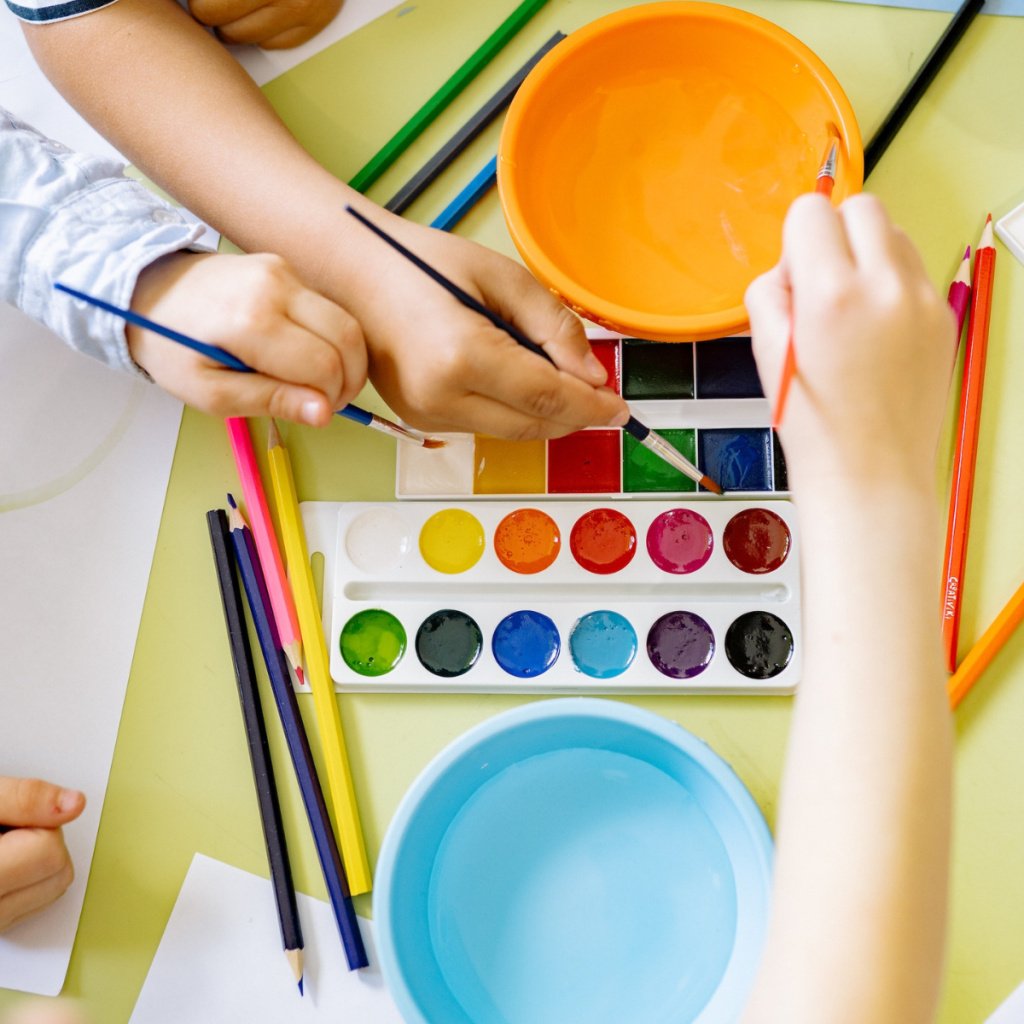Discover effective strategies and techniques for teaching painting to 4-5 year old children.
How to Teach Painting to 4-5 Year Old Children
As the saying goes, “Every child is an artist.” And it’s true! Children have an innate ability to express themselves through art, and teaching them painting at a young age can be a wonderful way to nurture their creativity and imagination. In this article, we will explore various strategies and techniques to make the painting experience enjoyable for 4-5-year-old children. So, let’s dive in and discover how we can unlock the inner artist in these little Picassos!
Understanding the Artistic Abilities of 4-5 Year Olds

Cognitive Development and Art
Before we jump into teaching painting, it’s important to understand the cognitive development of 4-5-year-olds and how it relates to art. This age group is developing their individuality and understanding of the world around them. By engaging in art, they can enhance their critical thinking, problem-solving, and decision-making skills. So, painting becomes more than just colorful strokes on a canvas; it becomes a medium for learning and self-expression.
When 4-5-year-olds engage in art activities, they are not only exploring their creativity but also developing their cognitive abilities. Through art, they can learn to observe and interpret the world around them. They can express their thoughts and emotions, making connections between their inner world and the external environment. This process helps them develop a sense of identity and self-awareness.
Moreover, art provides a platform for 4-5-year-olds to practice critical thinking and problem-solving skills. As they make decisions about which colors to use, how to mix them, and where to place them on the canvas, they are exercising their cognitive abilities. They learn to analyze and evaluate their choices, fostering their ability to think critically and make informed decisions.
Motor Skills and Painting
Another aspect to consider is the motor skills of 4-5-year-olds. At this age, their fine motor skills are improving, allowing them to control their hand movements more precisely. Painting helps further develop these skills as they learn to grip brushes, control the flow of paint, and create different shapes and lines. It’s like a dance of their hands, weaving colors on the canvas.
Through painting, 4-5-year-olds refine their hand-eye coordination and manual dexterity. They learn to manipulate the paintbrush with increasing control, creating finer details and more intricate designs. This process not only enhances their motor skills but also boosts their confidence in their own abilities.
Furthermore, painting provides an opportunity for 4-5-year-olds to explore different textures and materials. They can experiment with various types of brushes, sponges, or even their fingers to create different effects on the canvas. This tactile experience stimulates their senses and contributes to their overall sensory development.
As they engage in the artistic process, 4-5-year-olds also develop their spatial awareness. They learn to understand the relationship between objects and space, as well as how to represent three-dimensional objects on a two-dimensional surface. This spatial understanding is crucial for their future development in areas such as mathematics and geometry.
Preparing for the Art Session
When it comes to teaching painting to young children, there are several factors to consider in order to create a successful and enjoyable art session. In addition to providing guidance and inspiration, it is important to choose the right art supplies and set up a kid-friendly art space.
Choosing the Right Art Supplies
Choosing the right art supplies can make all the difference in a child’s painting experience. Opting for non-toxic and washable paints is essential to ensure the safety of their delicate skin and easy cleanup after the art session. These paints are not only safe, but they also allow children to freely explore their creativity without any worries. Additionally, using child-sized brushes will enable them to have better control over their strokes and create more detailed artwork. Providing a variety of colors will add excitement and allow children to experiment with different shades and combinations, enhancing their artistic expression.
Furthermore, it is important to consider the quality of the art supplies. Investing in high-quality materials will not only produce better results but also instill a sense of value and importance in the children. By providing them with quality art supplies, you are showing them that their artwork is valued and worth the investment.
Setting Up a Kid-Friendly Art Space
Creating a kid-friendly art space is crucial to set the stage for a successful painting session. Dedicate a corner of the room or a table specifically for their artistic endeavors. This designated space will not only provide them with a sense of ownership but also allow them to fully immerse themselves in the creative process. By having a dedicated area, children can leave their art supplies and ongoing projects undisturbed, allowing them to easily pick up where they left off during subsequent art sessions.
When setting up the art space, it is important to consider the cleanliness and safety of the area. Covering the surface with a plastic sheet or old newspapers will protect the table or floor from any spills or splatters. This way, children can freely explore and experiment without worrying about making a mess. Moreover, having a designated cleanup area with wet wipes or a sink nearby will encourage children to take responsibility for cleaning up after themselves, fostering good habits and independence.
To create a truly immersive and inspiring environment, consider displaying some inspirational artwork on the walls surrounding the art space. This can be artwork created by the children themselves or famous masterpieces. By having these visual references, children can draw inspiration and learn from the works of others. Additionally, using an easel can make the art space feel like a mini art gallery, elevating the children’s experience and making them feel like real artists in their own creative corner.
By carefully choosing the right art supplies and setting up a kid-friendly art space, you are creating an environment that fosters creativity, exploration, and self-expression. These considerations will not only enhance the children’s painting experience but also contribute to their overall artistic development.
Teaching Basic Painting Techniques
Teaching children about colors and how they interact is both educational and fun. It is a wonderful way to spark their creativity and develop their artistic skills. In this article, we will explore some exciting techniques to introduce color mixing and brush handling to young artists.

Introducing Color Mixing
When it comes to painting, understanding color mixing is essential. Start by explaining the primary colors – red, blue, and yellow. These colors are like the building blocks of all other colors. Show the children how these primary colors can be mixed together to create secondary colors such as purple, green, and orange. Let them experiment by mixing these colors together and observe the magical transformation as new colors emerge.
Encourage the children to use their fingers or brushes to create unique hues and shades. By allowing them to explore different painting tools, they can discover the various effects and textures they can achieve. This hands-on experience not only teaches them about color theory but also helps them develop their fine motor skills.
Remember, it’s not only about learning but also about experiencing the joy of discovery! Encourage the children to express themselves freely and embrace their creativity. Let them know that there are no mistakes in art, only opportunities for new discoveries.
Brush Handling Tips for Kids
Getting a grip on a paintbrush can be challenging for little hands. As an art teacher or parent, it is important to provide guidance and support to help children develop their brush handling skills.
Show them different ways to hold a paintbrush. Some children might prefer using their entire hand to paint, while others may grip it like a pencil. Let them explore what feels most comfortable to them. By allowing them to experiment with different grips, they can find a technique that suits their individual style.
As they experiment with brushstrokes, remind them that there are no right or wrong ways to paint – it’s all about having fun and embracing their personal style. Encourage them to try different brush sizes and shapes to create various effects on the canvas. By doing so, they can discover the endless possibilities that painting offers.
Additionally, provide them with opportunities to observe and learn from other artists. Show them examples of different brush techniques and encourage them to incorporate these techniques into their own artwork. By exposing them to a variety of styles and approaches, you can inspire their creativity and broaden their artistic horizons.
Remember, painting is a journey of self-expression and exploration. By teaching children basic painting techniques, you are nurturing their creativity and helping them develop a lifelong love for art.
Encouraging Creativity and Expression
Promoting Freehand Painting
Freehand painting is a great way to foster creativity in young children. Encourage them to paint whatever comes to mind without any restrictions. Provide visual stimuli like nature, animals, or their favorite storybook characters to inspire their imagination. Let them explore wild landscapes, cute creatures, or even abstract shapes. Remember, their paintings are windows into their world, and the sky’s the limit for their imagination!
Guiding Children in Artistic Expression
While promoting freehand painting, it’s essential to guide children in their artistic expression. Engage them in discussions about their creations. Ask open-ended questions like, “Tell me about your painting,” or “What inspired you to use these colors?” This not only allows them to express their thoughts and feelings but also helps develop their language and communication skills. So, be prepared for some delightful conversations that reveal the depths of their imagination!
Dealing with Common Challenges
Handling Mess and Spills
Painting with young children can be messy, but don’t let that discourage you! Embrace the mess and use it as an opportunity for learning and exploration. Lay down protective coverings, provide aprons, and keep some wet wipes handy to clean up spills quickly. Encourage them to enjoy the process, even if it means getting a little paint on their hands or clothes. Remember, a masterpiece can emerge from even the messiest of situations!
Keeping Kids Engaged in the Activity
Children have boundless energy, and it’s natural for them to get restless during a painting session. To keep them engaged, incorporate playful elements. Use different painting tools like sponges or cotton swabs for unique effects. Play some relaxing music or let them paint along with a favorite storybook or nursery rhyme. The key is to make the painting experience immersive and enjoyable, capturing their attention and sparking their creativity.
Teaching painting to 4-5 year old children is more than just an art lesson. It’s a journey of self-discovery, creativity, and fun. By understanding their artistic abilities, providing the right environment, and offering encouragement, we can nurture the artist within every child. So, gather your brushes, mix those colors, and embark on this colorful adventure with your little artists. Together, let’s create a world filled with boundless imagination and vibrant masterpieces!



